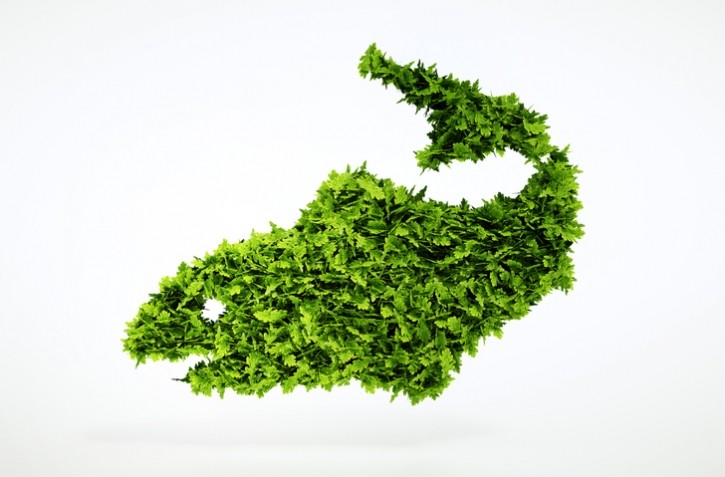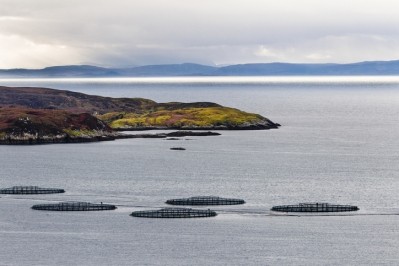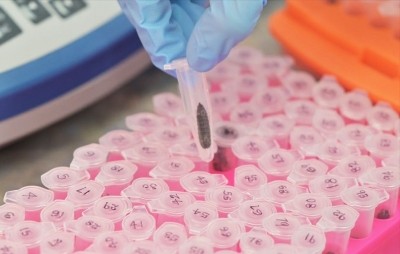Reports from the World Nutrition Forum in Cancun, Mexico
Aquaculture: Can we scale up novel feed raw materials in a sustainable way?

For example, in Norwegian salmon feeds, less than 1% of raw materials were classified as novel in 2020 (NOFIMA, 2022), outlined Dr Louise Buttle, Sustell lead for aqua and global key account manager, dsm-firmenich, when presenting at the company’s World Nutrition Forum in Cancun, Mexico earlier this month.
But she expects that share to increase to at least 3-4% in the not-too-distant future given the commitment by Skretting, Cargill and BioMar to use increasing amounts of novel sources of omega-3 in their feeds going forward and Mowi’s sustainability report for 2022 outlining how it wants achieve 10–15% inclusion of emerging feed raw materials with a low carbon footprint by 2030.
The Salmon Group recently outlined how extended feed contracts offer better opportunities to build closer cooperation and good relationships, giving more time and more leeway to intensify the introduction of more sustainable raw materials into feed formulations, as well as to ensure that human and labor rights are safeguarded in the feed's value chain. “The message here is that it is important to have a longer-term vision in relation to novel ingredient development, to appreciate that it is going to take time.”
Single cell proteins
Several companies, for example, are investing in the production of single cell proteins (SCPs) for feed use, and while these are promising novel raw materials, so far, there are few players providing sufficient quantities of product to meet aquaculture industry demand, she noted.
With increasing focus on green energy though, SCPs produced by fermentation technology have massive potential to deliver at scale, with zero carbon intensity, and with zero land use, said Dr Buttle.
“This is not new science. There were trials with single cell proteins in relation to farmed fish many years ago. But I think [today] it will come down to economies of scale and feedstocks in terms of making SCPs affordable. There needs to be recognition that there will be an investment phase. Developing fermentation units, the hardware involved, requires significant capital investment; it is expensive. And in terms of the technology around the bug producing the protein, the bioscience element, you also need the right expertise in relation to that. But I believe in SCPs, in terms of the scale that they can achieve.”
Indeed, dsm-firmenich, as a company, is actively exploring what role it can play in single cell protein development, she said. “In terms of Veramaris, we have already taken a novel ingredient - algal oil - to scale. That insight, knowledge, and experience, along with our fermentation expertise, can bring diverse approaches, unusual ways of thinking to the SCP space, to help make a commercially viable product.”
And the company has been conducting in-house research in relation to such novel protein inputs. “We have undertaken initial fish trials using different single cell protein strains in rainbow trout at our own on-site testing facilities, and we have had very encouraging results. We saw equivalent performance compared to standard formulations,” she told FeedNavigator.
The key parameter is the digestibility of the single cell proteins, and Dr Buttle said the findings were equally positive in that respect.
Industry collaboration
The industry is making advances when it comes to collaboration in this space, and this is the only way for early adoption in relation to new raw materials, she said.
“For many years, we have been focusing on the profile of novel raw materials in terms of their nutritional and technical performance in fish. But that is the easy part; the most challenging aspect of increasing adoption of such ingredients is getting the economics rights, ensuring scale of production, and encouraging the development of new business models that would be more equitable along the value chain where the commitment to pay and adoption at scale could be faster."
Dr Buttle cites, as an example of a fairer business model, the recently launched sustainable shrimp feed consortium backed by Dutch retailer, Albert Heijn, involving shrimp processor, Klaas Puul, feed producer, Skretting, insect protein supplier, Protix, and the DSM and Evonik algal oil JV, Veramaris, to supply supermarkets across Europe with shrimp provided with feed that has lower marine ingredient inclusion levels. While Albert Heijn is the first supermarket to commit to the project, the hope is that other retailers will get on board eventually.
“Working together across the value chain is the key to drive the sustainable production of aquaculture. If the production of novel raw materials at scale with market price was easy, we would have these technologies available today. It will take industry wide commitment and capital investment to make this a reality in the years to come.”
Environmental footprint
To gain market acceptance, emerging feed raw materials, beyond being able to perform in fish or shrimp, to have reached scale and to come in at the right price, will also have to have a lower environmental footprint, she stressed.
There is a critical need now to measure and benchmark both standard and novel raw materials with the same metrics as companies commit to environmental impact pledges. Full life-cycle assessment (LCA) is becoming more important.
Multiple operators and retailers have adopted science-based targets in terms of reduction of greenhouse gas (GHG) emissions. Financing of the aquaculture industry is playing a role, investors and banks need to verify their loans, with ESG performance requirements already gaining traction. Insurance companies also need to underwrite climate-related risks, she said.
Most importantly, each company will need to measure their own footprint, as industry averages will no longer be acceptable from stakeholders, said Dr Buttle.
dsm-firmenich has been working with leading animal protein producers to accelerate the use of LCA in their operations through its intelligent sustainability service, Sustell. That tool can measure a business's footprint, see where the hot spots are and help a company work towards reducing its GHG footprint in line with science-based targets, she said.















